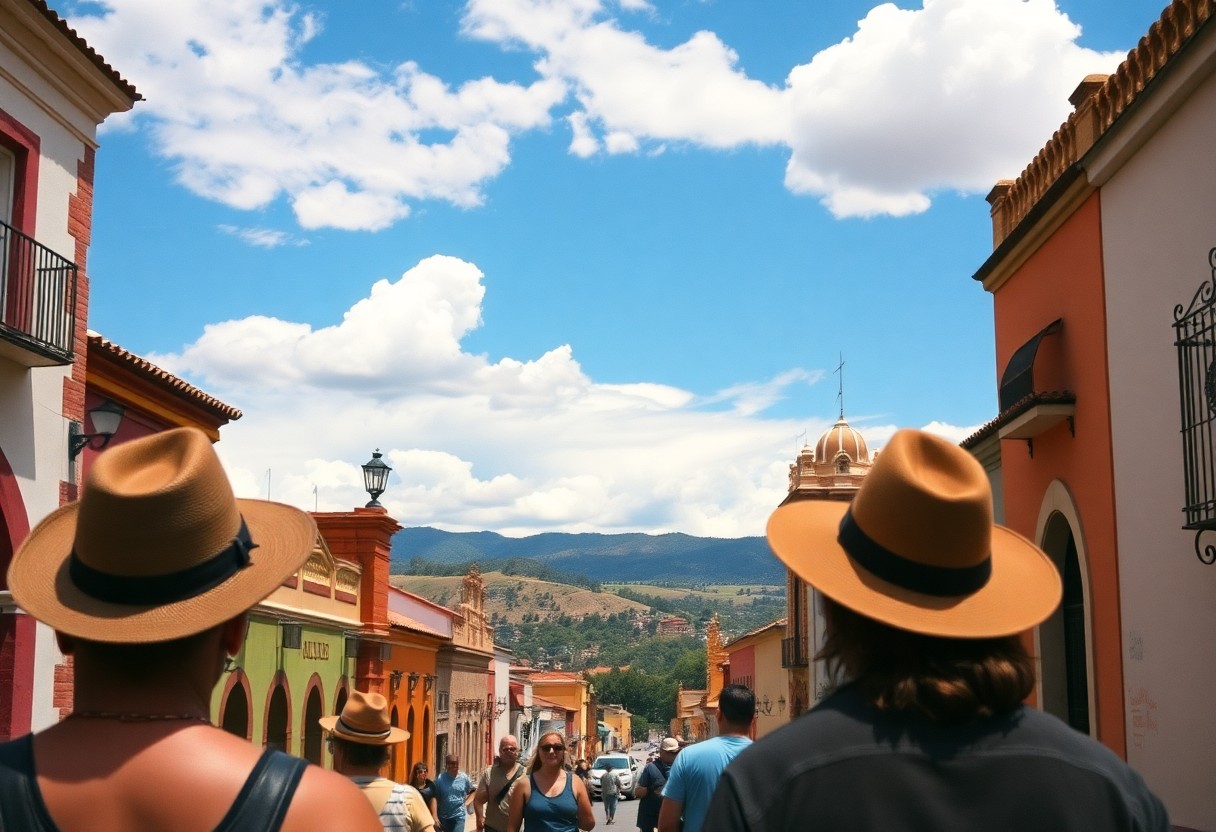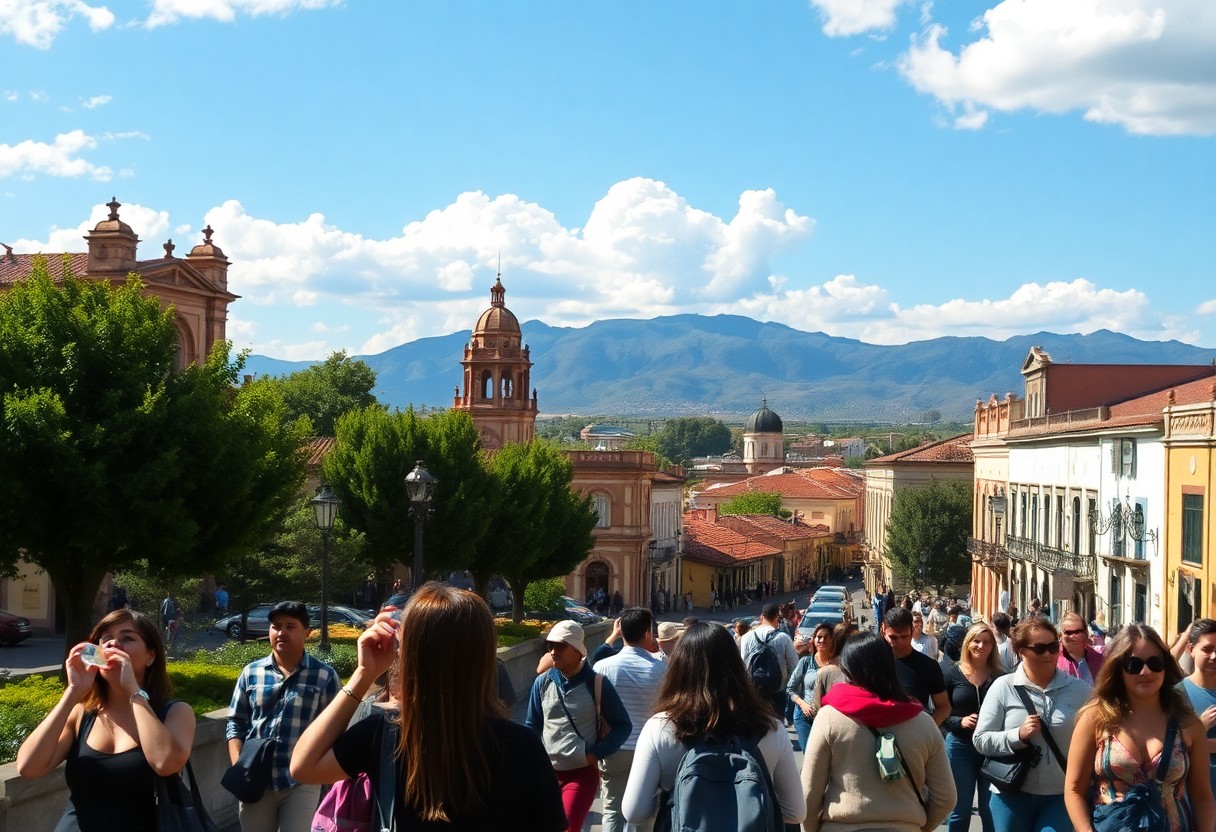San Miguel de Allende is celebrated for its breathtaking beauty and unique charm, but its remarkable elevation is an aspect that can catch many visitors off guard. Perched at an impressive 6,200 feet above sea level, this captivating city presents various altitude challenges that can significantly affect your travel experience. As your body adjusts to the thinner air, you might encounter symptoms such as mild headaches, shortness of breath, or fatigue. While these effects are typically temporary, they can be uncomfortable for some travelers. By gaining an understanding of how altitude affects your body and preparing in advance, you can ensure a more enjoyable and comfortable journey to this stunning Mexican destination. Staying properly hydrated, pacing your activities, and being attentive to your body's signals will enable you to fully indulge in the high-altitude allure of San Miguel de Allende.

Gain Insight into the Altitude and Climate of San Miguel de Allende
San Miguel de Allende's strategic position at a high elevation in central Mexico significantly shapes its unique atmospheric conditions, which can deeply influence your travel experience. The city's location within the Mexican highlands introduces visitors to specific altitude challenges that may impact both their comfort and health during their stay. Being informed about these environmental factors will empower you to prepare adequately and adapt effectively to the local climate, enhancing your overall enjoyment of this remarkable destination.
Critical Altitude Information for Travelers
San Miguel de Allende is located at an altitude of approximately 6,132 feet (1,870 meters), establishing it as a notable high-altitude destination. This elevation can trigger physiological reactions in visitors, including mild symptoms of altitude sickness or variations in respiratory function. You may experience slight breathlessness during your initial days, especially while participating in physical activities. Understanding this aspect of your trip will help you plan accordingly and alleviate any discomfort.
Dive into San Miguel de Allende's Climate Features
The climate of San Miguel de Allende is marked by its mild temperatures and relatively dry conditions, making it an attractive destination throughout the year. Expect warm days complemented by cooler nights, resulting in significant temperature variations across different seasons. The high-altitude environment contributes to a pleasant climate that draws numerous international visitors looking for a delightful escape.
This beautiful city enjoys a semi-arid subtropical highland climate, featuring distinct dry and rainy seasons. The dry season extends from November to April, offering sunny days with minimal precipitation. In contrast, the rainy season, which spans from May to October, brings refreshing afternoon thunderstorms that rejuvenate the landscape. When scheduling outdoor activities, keep these seasonal variations in mind, and dress in lightweight layers to easily adapt to fluctuating temperatures throughout the day.
Identify Common Symptoms Associated with High Altitude
If you're planning a visit to San Miguel de Allende, which is situated at an elevation of approximately 6,200 feet, it's essential to be mindful of potential altitude-related symptoms you might experience. At this significant altitude, your body may undergo physiological changes that could influence your comfort and health, leading to mild to moderate discomfort during your early days in this stunning Mexican locale.
Typical Symptoms Encountered by Visitors
While visiting San Miguel de Allende, a range of altitude-related symptoms may manifest, varying from mild to more pronounced experiences. Many travelers report encountering symptoms such as headaches, fatigue, shortness of breath, and occasional dizziness. Additionally, some individuals mention a decreased appetite, mild nausea, and disrupted sleep patterns as their bodies adjust to the increased elevation. Being informed about these potential symptoms can help you prepare for your trip and respond effectively to your body’s needs.
Essential Factors That Influence Altitude Symptoms
Several critical factors can shape your altitude experience during your stay in San Miguel de Allende:
- Personal fitness level
- Hydration status
- Previous altitude exposure
- Age and overall health
Understanding these elements will equip you with the knowledge necessary to prepare adequately for your visit, ensuring a smoother transition to the high-altitude environment.
Thorough Examination of Influencing Factors
Various aspects contribute to how you might experience altitude in San Miguel. Key factors include:
- Physical conditioning
- Acclimatization speed
- Cardiovascular health
- Genetic predisposition
Recognizing these nuanced influences can significantly impact your adaptation strategy and enhance your overall comfort during your visit.

Implement Effective Prevention Strategies and Health Tips for Your Journey
Visiting San Miguel de Allende at 6,200 feet elevation requires thoughtful preparation to effectively manage potential altitude effects. It’s vital to approach your trip with proactive health strategies that can minimize risks and enhance your overall comfort. By understanding and applying targeted prevention methods, you can significantly decrease the likelihood of experiencing altitude-related symptoms and fully relish your journey in this enchanting Mexican city.
Importance of Proper Hydration for Altitude Health
Preventing altitude sickness begins with maintaining excellent hydration. It is advisable to drink more water than usual, aiming for at least 3-4 liters daily. Your body requires increased fluid intake to compensate for elevated respiratory rates and potential fluid loss that occurs at higher elevations in San Miguel de Allende. Staying hydrated is crucial for ensuring your body adjusts effectively to the altitude.
Gradual Acclimatization Techniques to Embrace
Health experts recommend gradual altitude adaptation strategies for visitors to San Miguel. It’s wise to plan your first few days with minimal physical exertion, allowing your body to adjust naturally to the altitude. Engaging in slow movements, taking frequent rest breaks, and avoiding strenuous activities will aid your physiological systems in acclimatizing effectively.
Thus, successful acclimatization necessitates a strategic approach to your daily activities. Spending the initial days at a relaxed pace, incorporating short walks, and paying attention to your body’s signals will be beneficial. Monitoring your energy levels and avoiding rapid ascents can significantly alleviate altitude-related stress.
Nutritional Strategies for High Altitude Adaptation
Alongside hydration, your dietary choices are vital for successful altitude adaptation. It’s beneficial to consume high-carbohydrate, low-salt meals that support metabolic processes and help maintain energy levels. Light, nourishing foods will assist your body’s adjustment to the elevated environment of San Miguel.
The significance of nutrition cannot be overstated when visiting high-altitude destinations. Focus on easily digestible proteins, complex carbohydrates, and foods rich in potassium. Steering clear of heavy, greasy meals while maintaining a balanced diet will support your body's adaptation to the unique challenges imposed by the high elevation of San Miguel de Allende.
Reflections on Encounters in San Miguel de Allende
Throughout my journey in San Miguel de Allende, I experienced the profound effects of its high-altitude environment. At an elevation of 6,200 feet above sea level, the thin air presented challenges to my physical adaptation, creating a unique experience that reshaped my understanding of travel and personal resilience. The subtle effects of the elevation on my breathing and energy levels provided a fascinating exploration of how our bodies respond to significant geographical changes.
Insights from Fellow Travelers’ Experiences
Travelers frequently highlight their unexpected physiological responses to the altitude in San Miguel by sharing personal experiences. Many describe experiencing initial lightheadedness, reduced stamina, and a need to move slowly. Your first days may involve gentle acclimatization, with some visitors encountering mild symptoms such as headaches or slight fatigue, while others adapt more quickly to the elevated environment.
Practical Coping Strategies for Visitors
Visitors to San Miguel discover effective strategies for managing altitude-related challenges. It’s essential to prioritize hydration, consume lighter meals, and pace your activities. Simple techniques such as deep breathing exercises and taking frequent rest breaks can significantly minimize potential discomfort while you explore this beautiful city.
Coping with altitude requires a comprehensive approach. Your body’s adaptation is influenced by a variety of factors, including physical fitness, hydration levels, and individual physiological responses. Experts suggest a gradual increase in activity levels, avoiding alcohol initially, and opting for foods rich in complex carbohydrates. Consulting local healthcare professionals knowledgeable about the specific altitude dynamics of San Miguel de Allende can ensure a safe and enjoyable experience in this remarkable destination.

Expert Health Insights for Safe High Altitude Travel
When visiting San Miguel de Allende, it’s essential to consider altitude-related health factors. Healthcare professionals strongly recommend that visitors prioritize their well-being by understanding the potential physiological challenges associated with being at an elevation of 6,400 feet. Your body needs time to acclimate; proactive strategies can help minimize altitude-related discomfort.
Guidance from Healthcare Professionals
Among medical experts, there is a clear consensus: gradual acclimatization is your best defense against altitude sickness in San Miguel de Allende. Planning to rest during your first 24-48 hours, staying hydrated, and avoiding strenuous activities is essential. Your physician may suggest preventative medications or supplements to assist your body’s adaptation to the higher elevation.
Accessing Specialized Health Resources for Visitors
San Miguel de Allende offers comprehensive support for altitude-related concerns, from local clinics to specialized travel health centers. You can find medical professionals who understand the unique challenges posed by high-altitude environments and can provide tailored advice for your specific health needs.
Given the city’s popularity with international travelers, specialized medical resources are readily available. You will encounter English-speaking healthcare providers, diagnostic facilities, and emergency services equipped to manage altitude-related medical issues. Many hotels and tourist centers can provide immediate referrals and assistance, ensuring you receive prompt medical attention if necessary.
Key Insights for Enjoying Your San Miguel de Allende Visit
At elevations above 7,000 feet, San Miguel de Allende presents unique altitude challenges that can significantly impact your travel experience. It’s crucial to prepare by staying hydrated, moving at a leisurely pace, and allowing your body sufficient time to acclimate. During your initial days, you might experience mild symptoms such as shortness of breath or slight headaches, which are common at this altitude. By drinking enough water, consuming light meals, and initially avoiding alcohol, you can reduce potential discomfort. Pay attention to your body, take breaks when necessary, and appreciate the stunning beauty of this colonial city without overexerting yourself. By taking the time to prepare thoughtfully, you can ensure a comfortable and unforgettable visit to this high-altitude Mexican gem.
Answers to Common Questions (FAQ)
What is the elevation of San Miguel de Allende, and why is this elevation important for travelers?
San Miguel de Allende is situated at an elevation of approximately 6,200 feet (1,890 meters) above sea level. This high altitude can lead visitors to experience mild symptoms, including shortness of breath, headaches, and fatigue. The thinner air at this elevation results in reduced oxygen availability, which can affect physical performance and comfort levels for travelers unaccustomed to mountainous environments.
What altitude-related health precautions should travelers take when visiting San Miguel?
Visitors should prioritize hydration, consume light meals, and limit alcohol intake during their first 24-48 hours. Gradual engagement in physical activities will assist your body in adapting to the elevation. Walking slowly, resting frequently, and employing deep breathing techniques can help minimize potential altitude-related discomfort. It is advisable for individuals with pre-existing respiratory or cardiovascular conditions to consult a healthcare professional prior to travel.
Are there specific times or seasons when altitude effects are more pronounced in San Miguel de Allende?
Altitude effects can be more pronounced during the dry season (November-April) when air is thinner and humidity is lower. Visitors arriving during the winter months may experience heightened symptoms. Both daytime temperatures and sun exposure can also increase altitude sensitivity. Wearing layers, remaining hydrated, and allowing adequate time for physiological adjustment can help alleviate potential challenges.
The Article: Altitude in San Miguel de Allende: How It Affects Visitors and What to Do About It appeared first on https://fallinginlovewithsanmiguel.com/
The Article Altitude in San Miguel de Allende: Impact on Visitors and Tips Was Found On https://limitsofstrategy.com



Your insights on the altitude challenges in San Miguel de Allende are particularly important for travelers who may not be familiar with high-altitude locations. Having visited the city myself, I experienced these symptoms firsthand and found that the gradual adjustment truly made a difference in enjoying the stunning scenery and vibrant culture.
It’s great to hear that you experienced the altitude challenges personally. It’s fascinating how our bodies react to changes in elevation, isn’t it? A little adjustment period can make all the difference when it comes to enjoying everything a place like San Miguel de Allende offers.
I’m glad to hear that gradual adjustment helped you enjoy your experience! If you’re planning another trip or want more tips on navigating high-altitude destinations like San Miguel de Allende, check out this helpful guide.
https://beethovenplus.com/PhotoLeap
It’s interesting how altitude can really affect our experience in places like San Miguel de Allende. I remember when I first visited a high-altitude location, the slight headaches and breathlessness took me by surprise too. It really makes you appreciate the gradual acclimatization process. It’s fascinating how our bodies adapt, and when we’re mindful of it, we can truly immerse ourselves in the culture and beauty around us.
You bring up a great point about altitude and its impact on our experiences in places like San Miguel de Allende. Those first signs of altitude sickness, like headaches and a little shortness of breath, can catch you off guard, can’t they? I remember my first few days in a high-altitude spot and feeling that strange mix of excitement and breathlessness. It’s almost a rite of passage for anyone visiting elevated places.
“Glad to hear you had a similar experience! If you’re looking to explore more about how altitude influences travel, check out this insightful guide.”
https://beethovenplus.com/trustindex
I know what you mean about those unexpected symptoms at higher altitudes. It’s wild how something as simple as the air can change your experience so dramatically. I remember feeling that light-headedness in San Miguel de Allende too. It’s like your body reminds you that you’re not at sea level anymore!
“Absolutely, understanding altitude’s impact enhances our travel experiences! If you’re curious to learn more tips on acclimatization and exploring high-altitude gems like San Miguel de Allende, check out this helpful guide.”
https://beethovenplus.com/krystal
Altitude really does create a unique experience, doesn’t it? I remember my own first few days in high-altitude places, like San Miguel de Allende, feeling that strange mix of excitement and discomfort. The subtle headache creeping in or the way simple tasks seemed to take a bit more effort can be a wake-up call. It’s like our bodies are reminding us to slow down and listen.
It’s interesting to hear you share your personal experience with altitude challenges in San Miguel de Allende. It can be quite the adjustment for travelers who aren’t accustomed to high elevations. While some might breeze through without a hitch, others—like yourself—find they need to take it slow to really soak in the beauty of the place. Those initial symptoms, whether it’s fatigue, headaches, or that disorienting sense of light-headedness, can really put a damper on the excitement of exploring a new city.